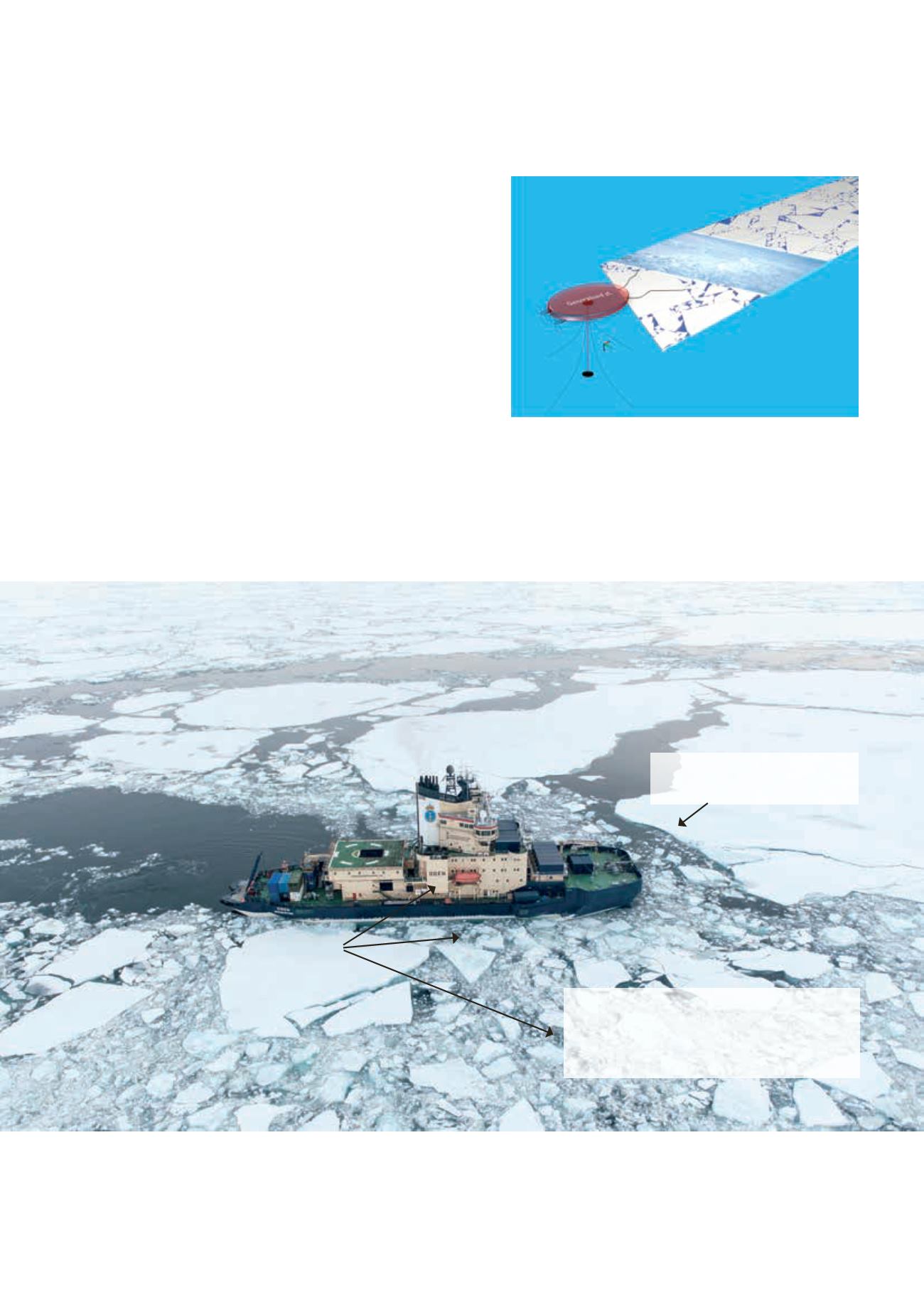

38
SAMC
o
T
• ANNUAL REPORT 2015
Global ice actions
WP4 develops the theory and methods to study the overall
actions that different ice features may exert on a floating
structure. This is illustrated in the generalized structure
shown in Figure WP4_1. The ice feature can be any contin-
uous or fragmented ice field, where the latter is either
naturally broken by gravity waves or artificially broken
e.g. by icebreakers. Further, it may include ice ridges.
Depending on the confinement, ice concentration and
floe size distribution, the governing mechanisms during
ice-offshore structure interactions can differ considerably
from those that dominate when the structures interact with
level ice.
Numerically, time-domainmodelling is inevitable due to the
considerable nonlinearities in the interaction processes.
The distinct nature of ice floes in a broken ice field has often
promoted the use of DEM, where ice floes are treated as
rigid bodies and the contact forces are modelled as spring-
dashpot forces or simply estimated from Newton’s laws
of motion. DEM is used extensively in our global ice action
modelling. Figure WP4_2 illustrates the processes and
forces considered in our modelling.
Figure WP4_1. Illustration of a generalized structure exposed
to different kinds of ice features.
6DOF
6DOF + fracture (crushing/
bending/splitting)
• Body forces (gravitational forces)
• Hydrostatic (buoyancy forces)
• Hydrodynamic (Aerodynamic) forces
• Contact forces
Photo: Sveinung Løset
Figure WP4_2. The building blocks of the DEM modelling illustrated on a photo of the Oden icebreaker during
a full-scale ice management trial off Northeast Greenland.
















